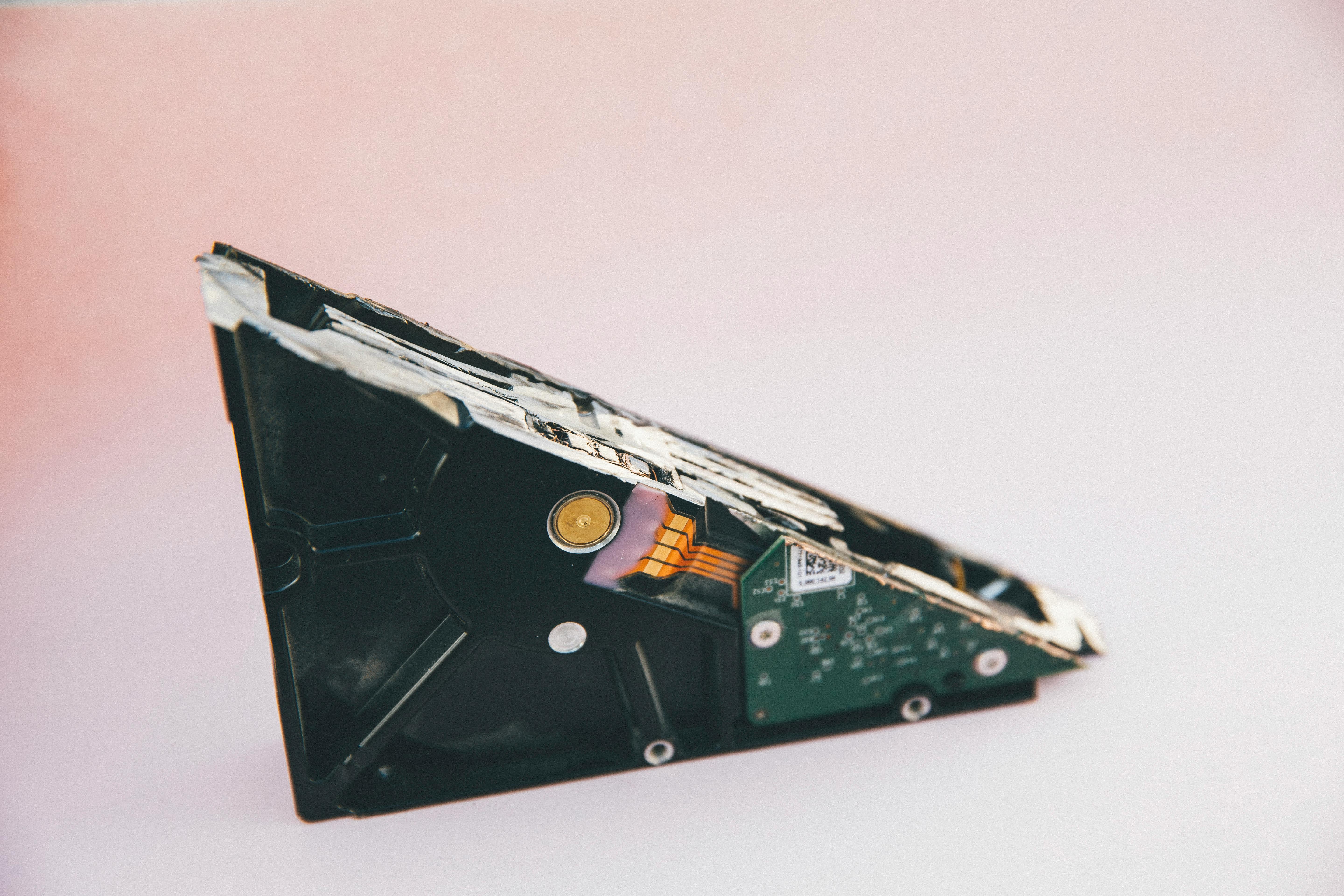Are you tired of the frustrating Windows 11 external drive eject fail? You’re not alone! Many users encounter this common issue, which can lead to data loss or corruption if not handled properly. In this article, we’ll uncover simple tips to help you fix the external drive eject fail in Windows 11 and make your computing experience smoother. Whether you’re a casual user or a tech enthusiast, these solutions are designed to be user-friendly and effective.
First, let’s delve into why Windows 11 sometimes struggles with external drives. When you connect an external device, the system needs to communicate effectively with it. If you’re constantly faced with the eject fail error, it could be due to background applications preventing safe removal or issues with the USB port itself. Have you considered that a simple setting adjustment could solve your problem? We’ll explore these possibilities and more.
In the following sections, we will provide you with actionable steps to troubleshoot and resolve the external drive eject fail in Windows 11. You’ll learn how to check for software conflicts, adjust your power settings, and even utilize built-in Windows features for a smoother experience. Don’t let a persisting eject issue ruin your productivity—read on and regain control over your external devices! This guide is packed with insights that will not only help you solve your current problem but also prevent future headaches. So, are you ready to tackle the Windows 11 external drive eject fail once and for all? Let’s get started!
10 Proven Solutions to Resolve Windows 11 External Drive Eject Issues Effortlessly

Are you tired of dealing with external drive eject issues on Windows 11? Many users find themselves in a frustrating position when their external drives don’t eject correctly, leading to potential data loss or corruption. Luckily, there are proven solutions to resolve these problems effortlessly. Below, we’ll explore 10 practical tips to fix Windows 11 external drive eject fails and ensure your devices work smoothly.
1. Check for Open Files
Before ejecting your external drive, make sure no files or applications are currently using it. Sometimes, an open file can prevent proper ejection. Close all programs and try again. You can also check Task Manager to see if there are any lingering processes.
2. Use Safely Remove Hardware Option
Always use the “Safely Remove Hardware” option from the system tray. Right-click the USB icon and select your device. This gives the system a chance to close down any processes related to the drive properly.
3. Update Drivers
Outdated or corrupted drivers can lead to various issues, including ejection problems. To update your drivers, go to the Device Manager, find your external drive under Disk Drives, right-click it, and select “Update Driver.” Follow the prompts to install any available updates.
4. Disable Quick Removal
Windows 11 has a feature called Quick Removal that allows you to remove devices without using the Safely Remove Hardware option. However, this can sometimes lead to ejection issues. You can disable it by going to Device Manager, right-clicking your external drive, and selecting Properties. Under the Policies tab, switch to Better Performance.
5. Run the Hardware and Devices Troubleshooter
Windows includes a built-in troubleshooter that can identify and fix common hardware issues. To access it, go to Settings > Update & Security > Troubleshoot > Additional troubleshooters > Hardware and Devices. Run the troubleshooter and follow the instructions.
6. Check for Malware
Malware can interfere with hardware functionality. Use a reputable antivirus program to scan your system. If malware is found, follow the program’s steps to remove it.
7. Change USB Ports
Sometimes, the problem may not be with your external drive but with the USB port. Try plugging the drive into a different port on your computer. This is a quick and easy way to troubleshoot the issue.
8. Format the Drive
If your external drive continues to have problems, consider formatting it. Remember, this will erase all data on the drive, so back up any important files first. You can format the drive by right-clicking it in File Explorer and selecting Format.
9. Check Disk for Errors
Using the Check Disk utility can help identify and fix errors on your external drive. Open Command Prompt as an administrator, then type chkdsk E: /f (replace E: with your drive letter). This will check for errors and attempt to repair them.
10. Restart Your Computer
Sometimes, the simplest solution is the most effective. Restarting your computer can resolve temporary glitches that cause ejection issues. It refreshes the system and can help in recognizing your external drive correctly.
By following these tips, you can fix Windows 11 external drive eject fails with ease. While these solutions may require some patience, they can often resolve the issues quickly without needing advanced technical knowledge. Whether you’re a casual user or a tech enthusiast, these steps are sure to help you maintain a smooth experience with your external devices. Don’t let ejection issues disrupt your workflow any longer!
Why Does Your Windows 11 External Drive Refuse to Eject? Discover the Top 5 Common Causes

When you’re trying to eject your external drive in Windows 11 and it just won’t budge, it can be really frustrating. Many people face this issue and often wonder, “Why does my Windows 11 external drive refuse to eject?” Understanding the common causes can help you troubleshoot effectively. Here’s a look into the top five reasons for this annoyance and how to fix the Windows 11 external drive eject fail with some simple tips.
1. Files Still in Use
One of the most common reasons your external drive won’t eject is that files on the drive are still being accessed. This could be anything from a document you’re editing, to a music file you’re listening to. Windows can’t safely eject the drive if it thinks something is using it.
- Ensure no programs are running that might be using files from the drive.
- Check your Task Manager to see if any applications are still active.
2. Background Processes
Sometimes, background processes in Windows are accessing the external drive, preventing it from being ejected. This can include automatic backups or even system processes that utilize the drive without your knowledge.
- You can use Task Manager to check for these processes.
- Close any unnecessary applications and try again.
3. Fast Startup Feature
Windows 11 has this feature called Fast Startup, which is meant to help your PC boot up faster. However, it can sometimes cause issues with external devices. If you have this feature enabled, it might be keeping your external drive in use even after you think you’ve closed everything.
- You can disable Fast Startup by going to Control Panel > Power Options > Choose what the power buttons do.
- Uncheck the “Turn on fast startup” option and save changes.
4. USB Port Issues
Sometimes the issue can be related to the USB port itself. If the port is malfunctioning or if there’s a loose connection, it could prevent proper communication with the external drive.
- Try unplugging the drive and plugging it into a different USB port.
- You can also try using a different cable to see if that resolves the problem.
5. Corrupted Drive
In some cases, the external drive itself may have corruption issues. If there are file system errors, Windows may refuse to eject the drive to avoid data loss.
- You can check for errors by right-clicking on the drive in File Explorer, selecting Properties, and then going to the Tools tab. Click on “Check” under Error checking.
- If errors are found, follow the prompts to fix them.
Quick Tips to Fix Windows 11 External Drive Eject Fail
If you’re still having trouble, here are some quick tips to try:
- Use the “Safely Remove Hardware” feature by clicking the icon in the taskbar.
- Restarting your computer can sometimes reset the processes that are keeping the drive in use.
- If all else fails, you can force the drive to eject by shutting down your computer (though this should be a last resort).
By understanding why your Windows 11 external drive refuses to eject, you can take steps to fix the problem effectively. Whether it’s checking for open files, managing background processes, or using the right USB ports, these tips can help you handle the situation. Don’t let the eject fail frustrate you; with some simple troubleshooting, you can get back to using your external drive without issue.
Step-by-Step Guide: How to Safely Eject External Drives on Windows 11 Without Hassle

If you are using Windows 11, you might have faced issues with ejecting external drives. It’s kinda frustrating when you try to safely remove your USB or external hard drive, and it just won’t budge. This article gives you a step-by-step guide on how to safely eject external drives on Windows 11 without hassle and fixes for when you encounter the dreaded external drive eject fail problem.
Why Safely Ejecting is Important
When you plug in external drives like USB sticks or external hard drives, Windows creates a connection, and files can be accessed easily. If you simply pull out the drive without ejecting it, you might lose data or even corrupt the drive. Windows 11, like its predecessor, includes built-in features to help safely eject drives, but sometimes things goes wrong.
Step-by-Step Guide: Ejecting External Drives
-
Locate the Taskbar: First thing you need to do is look at the bottom right corner of your screen, where the taskbar is located. You’ll find an icon that looks like a USB plug with an arrow around it.
-
Click on the Eject Icon: Once you click on that icon, a list of all connected devices will show up. Find your external drive in the list.
-
Select the Drive: Click on the drive you want to eject. If done correctly, a message should appear saying it’s safe to remove the hardware.
-
Physically Disconnect the Drive: Now, you can pull out the drive from the USB port. Make sure to do this only after you see the message.
Fix Windows 11 External Drive Eject Fail: Troubleshooting Tips
Sometimes you might click the eject button and nothing happens. Here are some simple tips to fix Windows 11 external drive eject fail issues:
-
Close Open Files or Applications: If there are files open that are stored on the external drive, you can’t eject it. Close any applications that might be using files from that drive.
-
Check in Task Manager: Press Ctrl + Shift + Esc to open the Task Manager. Look for any applications that might be using the external drive. End those tasks if necessary.
-
Use File Explorer: Open File Explorer, right-click on the external drive, and select “Eject.” This sometimes works better than the taskbar method.
-
Restart Your Computer: If all else fails, simply restarting your computer can solve the issue. It closes any processes that may be keeping the drive in use.
Additional Tips and Tricks
-
Update USB Drivers: Ensure that your USB drivers are up-to-date. You can check this by going to Device Manager, expanding the “Universal Serial Bus controllers” section, right-clicking each item, and selecting “Update driver.”
-
Check for Windows Updates: Sometimes, Microsoft release updates that fix bugs related to external drives. Make sure your Windows 11 is up-to-date.
-
Use Disk Management: Right-click on the Start button, select Disk Management, and see if there are any issues with the external drive. If you see that it’s offline, try right-clicking and selecting “Online.”
-
Use Command Prompt: For the tech-savvy, you can use Command Prompt. Type “diskpart” and then “list volume” to see the list of drives. You can then select your drive and type “remove” to eject it.
With these steps and tips, you should be able to safely eject your external drives without hassle. Remember, keeping your data safe is crucial, so always take a moment to ensure everything is closed before you unplug. Following these guidelines can prevent any unwanted data loss or corruption.
Unlock the Secrets: 7 Essential Tips to Fix External Drive Eject Failures in Windows 11

If you ever faced the annoying problem of your external drive not ejecting properly in Windows 11, you’re not alone. Many users have trouble with this issue, which can lead to data loss or corruption. So, let’s dive into some essential tips that can help fix those frustrating external drive eject failures. Unlock the secrets to a smoother experience with these straightforward strategies!
1. Safely Remove Hardware Option
First things first, always try using the “Safely Remove Hardware” option. You can find this by clicking on the taskbar. When you click the icon, a list of connected devices will show. Select your external drive from that list. This can minimize the risk of data corruption. Also, sometimes, just unplugging the drive without this step can cause problems.
2. Windows Settings
Another great way to address the eject issue is through Windows settings. Go to Settings > System > Storage. There, you can manage how Windows handles external drives. Make sure the settings are optimized for your needs. It’s often a good idea to disable “Quick Removal” if you are frequently having issues. This might sound counterintuitive, but it helps in some cases.
3. Check for Running Applications
You might not realize it, but some applications can keep files open on your external drive. Before trying to eject, close any programs that could be using files from the drive. This includes photo editing software, document editors, and even your web browser. If you don’t know what’s using your drive, you can check the Task Manager. Just press Ctrl + Shift + Esc, look for any active apps that could be linked to your drive, and end those tasks.
4. Update Drivers
Sometimes, the drivers for your external drives aren’t up-to-date. Go to Device Manager by right-clicking the Start button. Find Disk Drives, right-click on your external drive, and click “Update Driver.” This could resolve any incompatibility issues that cause your drive to fail during ejection.
5. Disable Fast Startup
Fast Startup is a feature that can mess with external drive ejections. Disabling it might just solve your problem. You can find this option in Control Panel. Navigate to Power Options, then to “Choose what the power buttons do.” Uncheck “Turn on fast startup” and save the changes. Restart your computer and see if that helps.
6. Check Disk Utility
Windows 11 has a built-in utility that scans and repairs drives. Run the Check Disk utility by typing “cmd” in the search bar, right-clicking Command Prompt, and selecting “Run as administrator.” Type chkdsk X: /f (replace X with your drive letter) and hit Enter. This might take some time, but it could fix underlying issues that lead to eject failures.
7. Format the Drive
If all else fails, formatting your external drive can be a last resort. Before doing this, remember that formatting will erase all data. So, back up your files if possible. Right-click on the drive in File Explorer, select Format, and follow the steps. This can often clear up any persistent issues that are causing the eject failures.
Fixing the Windows 11 external drive eject fail might sounds daunting, but with these simple tips, you can tackle the problem head-on. Whether you use the safe removal option, check for applications, or update drivers, there are multiple avenues to explore. Every solution might not work for everyone, but trying them out could lead to a resolution. Don’t let those external drive issues slow you down!
Are You Struggling with External Drive Eject Problems? Here’s How to Troubleshoot in 5 Simple Steps

Are you tired of your external drive not ejecting properly? It can be frustrating when you try to safely remove your external drive only to face a stubborn refusal from Windows 11. This issue can happen for a variety of reasons, often leading to data loss or corruption if not handled right. Don’t worry! We got you covered with some simple steps to troubleshoot and fix Windows 11 external drive eject problems. Let’s dive into it!
Understand the Problem
First, it’s important to understand why external drives sometimes refuse to eject. Windows 11, like its predecessors, sometimes keeps files open even when you think you closed them. This can be due to background processes still accessing the drive. Some common causes include:
- Applications still using files from the external drive
- Background processes or services that haven’t released the drive
- File Explorer or other programs still open
- Corrupted drive or file system errors
Step 1: Close All Programs
Before you try to eject the drive, make sure that all programs that may be using files from the external drive are closed. This includes:
- Document editors (like Word or Excel)
- Media players
- Web browsers, if they are accessing files from the drive
Step 2: Use Task Manager
If you still can’t eject the drive, there’s a chance some background processes are still running. Open Task Manager by pressing Ctrl + Shift + Esc. Look through the list of processes and see if any are related to the files or applications on your external drive. If you find any, select them and hit “End Task”.
Step 3: Eject Using File Explorer
Sometimes, the easiest way to eject a drive is through File Explorer. Simply right-click on the drive icon and select “Eject”. If this doesn’t work, try refreshing the File Explorer window first. You can do this by clicking the refresh icon or pressing F5.
Step 4: Check for Errors
If your drive still won’t eject, there could be errors on it. To check for errors, follow these steps:
- Open File Explorer and right-click on the external drive.
- Select “Properties”.
- Go to the “Tools” tab.
- Under the “Error checking” section, click “Check”.
This will scan the drive for issues and potentially fix them.
Step 5: Safely Remove Hardware
If all else fails, you can try using the “Safely Remove Hardware” option. Click on the Windows icon on your taskbar, find the “Safely Remove Hardware and Eject Media” icon, and select your external drive. This might force Windows to clear any locks on the drive.
More Tips to Avoid Eject Problems
- Keep your software updated: Regularly check for Windows updates and install them to help ensure compatibility with external devices.
- Use different USB ports: Sometimes, the problem might be with the USB port itself. Switching ports can sometimes resolve the issue.
- Avoid using the drive while it’s ejecting: This may seem obvious, but people often try to open files or transfer data while the drive is in the process of being ejected.
Troubleshooting external drive eject problems in Windows 11 can be a hassle, but with these simple steps, you can handle it without too much stress. Remember to always safely eject your drives to prevent data loss or corruption. If you continue to experience issues, it might be time to consider a new external drive or consult with a tech professional for further assistance. Happy computing!
Conclusion
In conclusion, addressing the issue of external drive eject failures in Windows 11 requires a combination of troubleshooting steps and preventive measures. We explored several effective solutions, including ensuring all files are closed before ejecting, utilizing the Safely Remove Hardware feature, and updating drivers for optimal performance. Additionally, adjusting power management settings and checking for system updates can significantly reduce the likelihood of encountering this problem. Remember to regularly back up your data to prevent potential loss during unforeseen ejection issues. If problems persist, consider consulting with a professional or reaching out to Microsoft support for further assistance. By taking these proactive steps, you can enhance your experience with external drives on Windows 11 and maintain seamless data management. Take action now to implement these solutions and enjoy hassle-free usage of your external devices.

